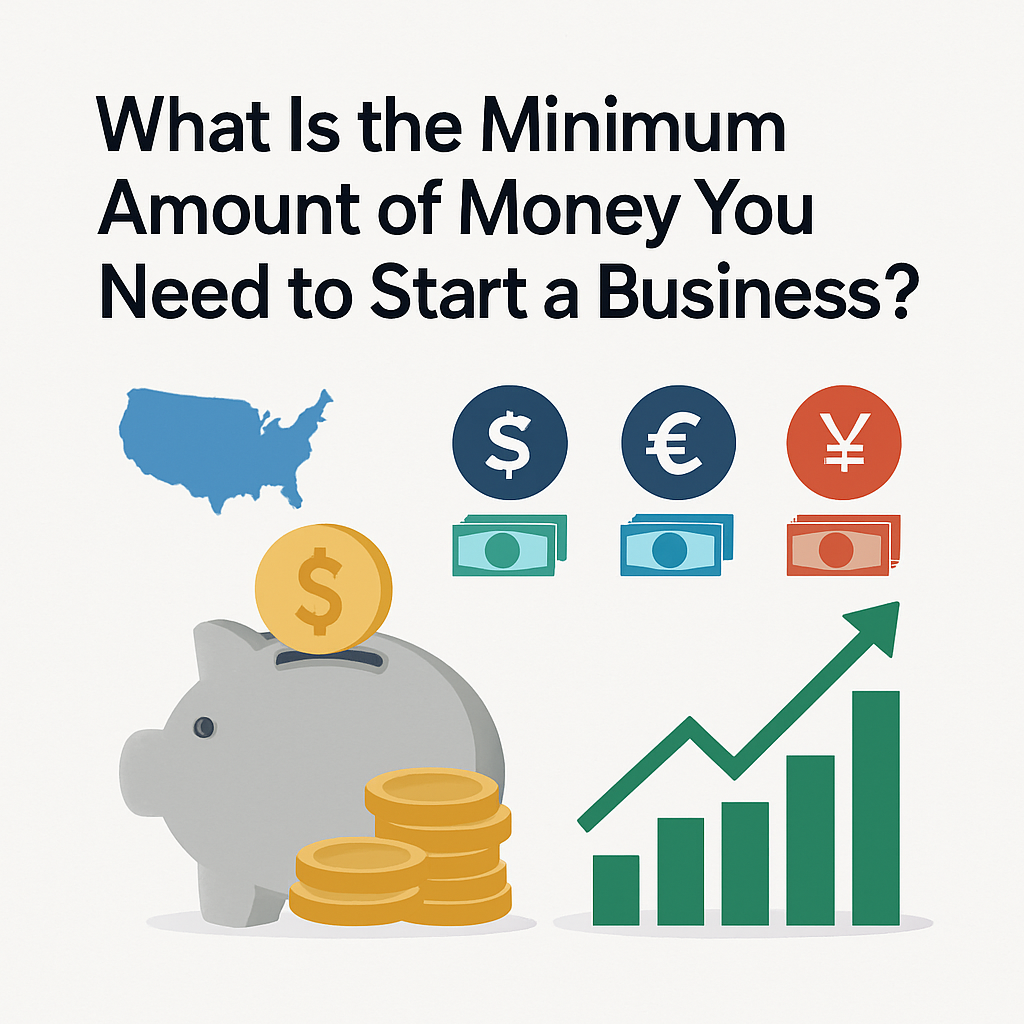What Is the Minimum Amount of Money You Need to Start a Business?

The amount of money needed to start a business is not one-size-fits-all. It depends heavily on location, industry, and whether you operate online or offline. In the United States, most small businesses can launch with less than $25,000, but the “minimum” can be much lower for digital or home-based ventures. By contrast, costs in Europe and Asia follow different patterns due to rent, licensing, and infrastructure.
1. Typical Startup Costs in the U.S.
According to the U.S. Small Business Administration (SBA), more than 58% of small businesses begin with less than $25,000, and many microbusinesses cost $3,000 or less to launch if operated from home.
a) Online Business (E-commerce, Digital Products)
- Business registration: $100–$300
- Domain & hosting: $50–$150/year
- E-commerce platform: $30–$80/month
- Marketing ads (test budget): $200–$500
- Minimum realistic range: $500–$1,200
Example: A U.S. home-based jewelry seller launched a Shopify store with $800, using Instagram Reels for marketing and reinvesting early profits into paid ads.
b) Service-Based Business (Consulting, Freelancing, Coaching)
- Registration & permits: $100–$500
- Website/branding: $200–$600
- Software subscriptions (Zoom, Canva, bookkeeping): $20–$100/month
- Marketing: $200–$500
- Minimum realistic range: $500–$1,500
Example: A marketing consultant in Chicago started with $1,200 — mainly covering LLC registration, a website, and LinkedIn ads. She worked from home to cut overhead.
c) Food Business (Food Truck, Small Café)
- Licenses & permits: $500–$2,000
- Equipment & supplies: $5,000–$15,000 (lower if used equipment)
- Insurance: $500–$2,000
- Initial inventory: $2,000–$5,000
- Minimum realistic range: $8,000–$20,000
Example: A taco food truck in Texas launched for ~$12,000 by purchasing a used trailer and renting commissary kitchen space.
d) Retail Store (Clothing, Bookstore, Small Shop)
- Lease deposit & first month rent: $2,000–$10,000 (location dependent)
- Inventory: $5,000–$20,000
- Setup (furniture, shelving, signage): $3,000–$10,000
- Insurance & permits: $500–$2,000
- Minimum realistic range: $12,000–$40,000
Example: A used bookstore in Ohio opened with $15,000, sourcing second-hand books and using DIY shelves.
2. Comparison: U.S. vs. Europe vs. Asia
United States
- Higher legal and insurance costs.
- Wide variation in rent (San Francisco vs. Midwest).
- Online businesses are cheapest: often under $1,500.
Europe
- UK: Registering a company is cheap (£12 online), but rent and wages in London are high. A café might need £25,000–£50,000 to start.
- Germany: Bureaucracy adds costs (trademark, VAT registration, permits). A small retail shop often needs €15,000–€40,000 minimum.
- Eastern Europe (Poland, Romania): Lower wages and rents; some microbusinesses launch with €2,000–€5,000, especially service-based.
Asia
- India: Business registration can be under $100, labor costs are lower. Service businesses often start with $500–$1,000, but scaling is challenging due to infrastructure.
- China: Manufacturing startups need higher capital ($10,000+) due to supply chain and licensing, but e-commerce businesses can start lean.
- Southeast Asia (Philippines, Vietnam): Home-based and online businesses can start with as little as $300–$800, though legal protections may be weaker.
In the U.S., online/service businesses can often launch with $500–$1,500, while food and retail usually require $8,000–$40,000.
In Europe, registration can be cheaper, but bureaucracy and rent increase costs.
In Asia, starting costs for online and service businesses are often the lowest, but infrastructure challenges may offset savings.
Regardless of location, testing small, starting lean, and reinvesting profits is the safest path.

